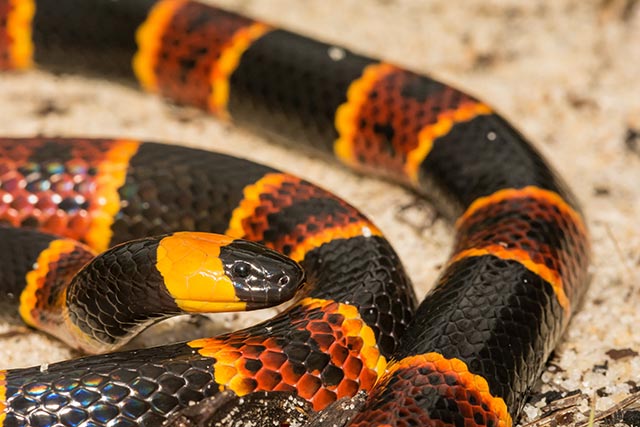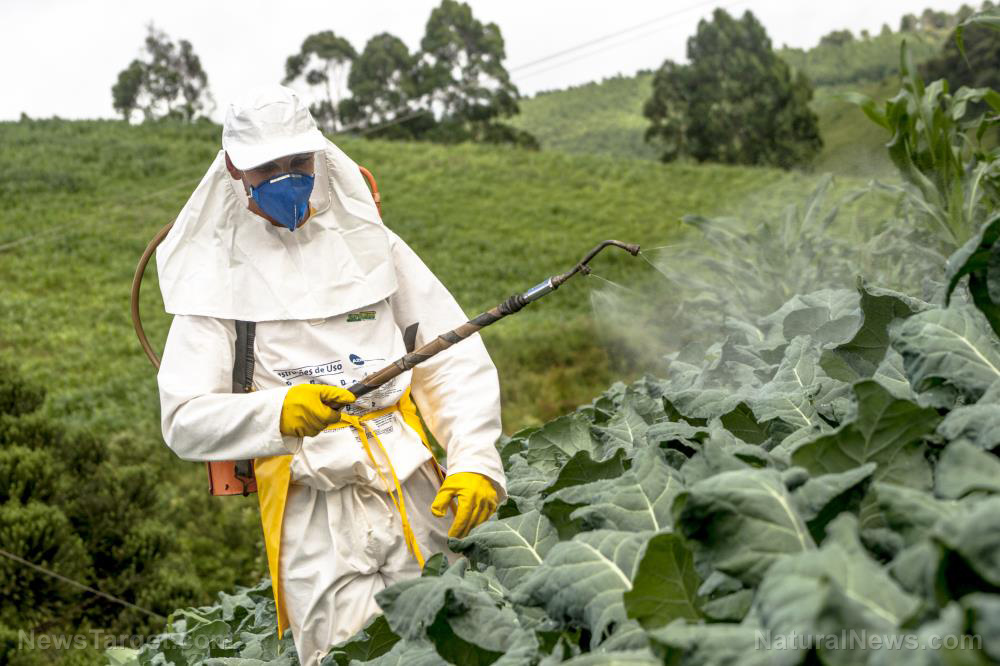Agricultural chemicals and destructive practices caused butterfly numbers to plummet by 66%
08/04/2019 / By Tracey Watson

In recent years, media reports have made most of us aware of the crisis being faced by both wild and domestic honeybees. As reported by Greenpeace, since 1962 the number of bee colonies per hectare – which is viewed as a critical indicator of crop health – has dropped by a massive 90 percent. This is alarming, because honeybees are responsible for about 80 percent of all the pollination on our planet, including pollinating about 70 percent of all human food crops.
Studies have detected a “deadly pesticide cocktail” of over 150 different chemicals in bee pollen, and most experts believe that agricultural pesticide use is one of the main causes of worldwide bee colony collapse.
Bees are not the only pollinators facing extinction because of agricultural activities, however. As reported by Science Daily, a recent study by a team of German scientists, published in the journal Insect Conservation and Diversity, found that the number of butterfly species has decreases by more than 50 percent in areas close to high-intensity agricultural zones, while individual butterfly numbers are only about a third of what they should be in these areas. (Related: Colony Collapse Disorder debunked — pesticides cause bee deaths.)
More than half of Germany’s butterfly species in trouble
Germany is home to around 33,500 species of insects, including 189 different butterfly species. Most of these butterflies are in trouble, however. Five species have already been wiped out entirely, 12 are facing imminent extinction, and 99 have been added to the International Union for Conservation of Nature (IUCN) Red List of Threatened Species – the second most severe status, after Critically Endangered.
The team of scientists led by Jan Christian Habel of the Technical University of Munich (TUM), and Thomas Schmitt at the Senckenberg Nature Research Society, set out to try to determine how intense agricultural activity might be influencing these statistics.
For their study, the scientists recorded the numbers of butterfly species active in 21 meadow sites outside of Munich, Germany. While four of these sites are located in nature preserves, 17 are adjacent to agricultural areas.
A total of 24 butterfly species, with 864 individuals, were recorded across all sites. In the conservation areas, an average of 6.6 species were identified in each area, but an average of only 2.7 species – less than half – were found in each of the agricultural areas.
The study abstract concludes:
- As in the managed semi?natural reference grasslands, species richness and abundance were higher in patches surrounded by extensively used grasslands and unsprayed crop fields, and lower in patches surrounded by sprayed crop fields. Furthermore, blossom density positively affected butterfly occurrence.
- Our data revealed that specialised butterfly species mainly occur in managed semi?natural grassland sites, and are largely absent from other grassland plots embedded in the agricultural matrix. (Related: Pesticides threaten extinction of monarch butterflies.)
The results are obvious
The study’s lead author, Professor Habel, believes that these results provide evidence of an obvious trend. “[I]n the vicinity of intensively cultivated fields that are regularly sprayed with pesticides, the diversity and numbers of butterflies are significantly lower than in meadows near less used or unused areas,” he noted.
This trend is likely being duplicated across Europe, which has experienced severe insect species losses in many different countries.
The researchers stress that the results of their study underline how negatively intensive farming impacts the diversity and abundance of butterfly species. They believe that there is an urgent need for the development of more “nature-friendly cultivation methods.”
Certainly, something has to be done urgently to save our bees and butterflies, as much for our own sake as for theirs. Learn more about the crisis facing our pollinators at Bees.news.
Sources for this article include:
Submit a correction >>
Tagged Under:
agricultural chemicals, bees, Big AG, biodiversity, Butterflies, colony collapse, conservation, destruction, Ecology, ecosystems, environ, environment, extinction, food supply, insect species losses, insects, pollinators, research, toxic chemicals
This article may contain statements that reflect the opinion of the author
RECENT NEWS & ARTICLES
Chemicals.News is a fact-based public education website published by Chemicals News Features, LLC.
All content copyright © 2018 by Chemicals News Features, LLC.
Contact Us with Tips or Corrections
All trademarks, registered trademarks and servicemarks mentioned on this site are the property of their respective owners.





















